Demand
| Author: |
Yamakei (Keizo Yamaguchi) |
| Release: |
"LOG iN" Apr. 1985 Issue |
The 1st file:
This game is originally for tape. The line #240 has a "CAS:" string. The line #230 has Japanese words. Now translated in English.
If we modify the code as described above, each checksum will change as follows (using version 3.1 coded by the "MSX•FAN" team).
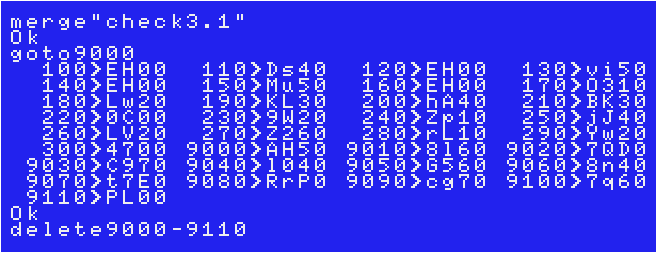
Sorry if there are any typos, however, I have tested my data, and had no problems.
This game is originally for tape. It seems that part of the program's area of use overlaps with the disk's work area.
Modern emulator users must press CTRL key during power on.
AmiMSX users (24990 Bytes left) and MSXAdvance users (24510 Bytes left) don't have to mind.
The 2nd file named "DEMAND.BIN":
This game is originally for tape. It seems that part of the program's area of use overlaps with the disk's work area.Modern emulator users must press CTRL key during power on. AmiMSX users (24990 Bytes left) don't have to mind.
Use "Monitoring RAM" program that "MSX Magazine" team coded.
...After you entered all data, don't forget to compare each checksum with that in the magazine.(Type "DA000".)
Save the file typing following:
BSAVE"DEMAND.BIN",&HA000,&HDFFF
Joystick support:
Fortunately, the author showed us where to fix it to support joystick. Also, lines #270-280 need to be fixed.
For CD32+FDD users:
It seems that "VDP(8)AND32" command are used as machine language.
AmiMSX and fMSX(Amiga port) cannot emulate it, and nothing happens if you touch with enemy or shoot enemies.
Supposedly, it would be very hard to fix the 2nd file.
For SNES+AD Adapter users:
Fortunately, the "VDP(8)AND32" command in this game will work with MSXAdvance as well as "Voice of Danger 2".
Route Finding
| Author: |
Yamakei (Keizo Yamaguchi) |
| Release: |
"Bessatsu LOG iN 1: MSX Game Book" |
| Japanese title name: |
"ルートファインディング" It means to find the (correct) route in English. |
Katakana keys and Enter key: To enter a password to restart from the the 2nd / the 3rd level.
H: Drive a piton into a wall. K: Clip a quickdraw to the piton. Z: Put a rope on the quickdraw.
The 1st file:
A wrong English ("PLOGRAM") was in the line #30. Correct it and add "KEYOFF:" there.Original the line #300 was only "END",which causes only "Ok" is shown after you completed all levels. It would be better if we fix that.
Original the line #1150 was BLOAD "MC", but we believe that an extension is necessary.

If we modify the code as described above, each checksum will change as follows (using version 3.1 coded by the "MSX•FAN" team).
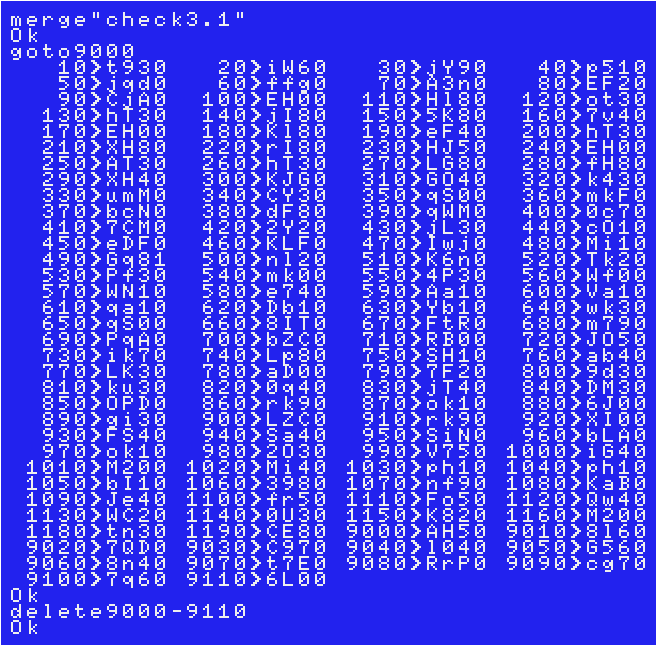
Sorry if there are any typos, however, I have tested my data, and had no problems.
This game is originally for tape. It seems that part of the program's area of use overlaps with the disk's work area.
Modern emulator users must press CTRL key during power on.
AmiMSX users (24990 Bytes left) and MSXAdvance users (24510 Bytes left) don't have to mind.
The 2nd file named "ROUTE-F.BIN":
This game is originally for tape. It seems that part of the program's area of use overlaps with the disk's work area.Modern emulator users must press CTRL key during power on. AmiMSX users (24990 Bytes left) don't have to mind.
Use "Monitoring RAM" program that "MSX Magazine" team coded.
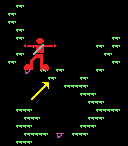 |
The map shown as a strategy guide on page 137 is different from the map actually displayed. Please enter 31 instead of 00 for DED7. The checksum is shown below.  It's possible to complete this level by a harder way without modification, but that's the first level, so... |
Save the file typing following:
BSAVE"ROUTE-F.BIN",&HA300,&HDFFF
My suggestions for English version:
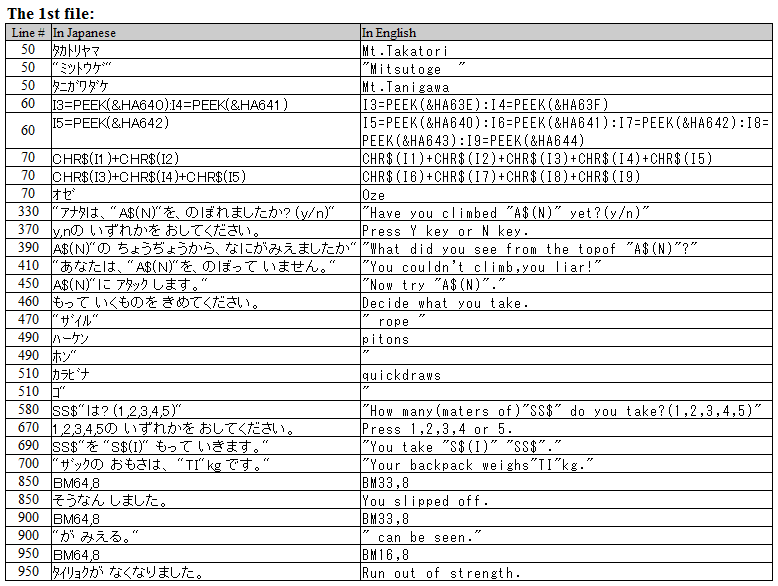
By the modifications described above, each checksum changes as follows (using version 3.1 coded by the "MSX•FAN" team).
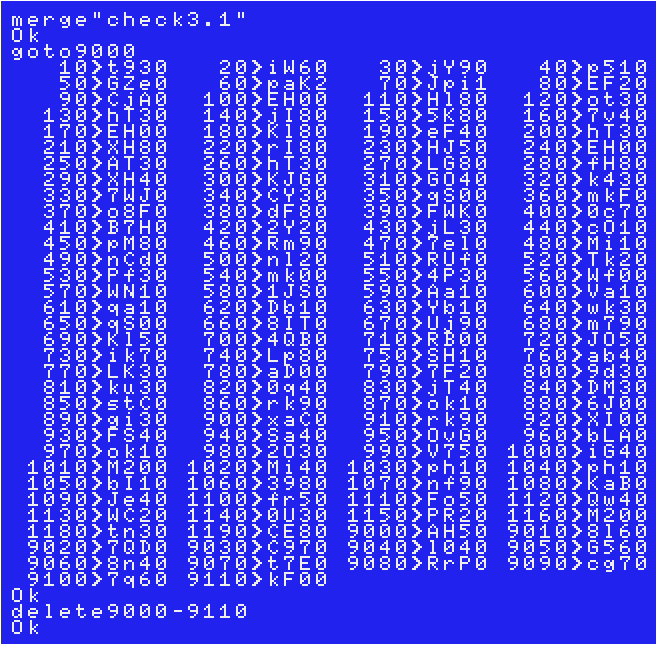
In addition, you have to modify the 2nd file as below.

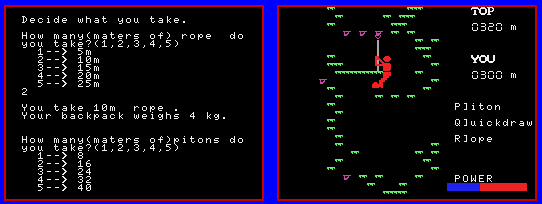
Now P, Q and R keys can be used instead of H, K and Z keys. Also, each password becomes alphabetic instead of Katakana.
Sorry, SNES+AD Adapter users have to use MSXAdvance's virtual keyboard.
Tokubetsu-hen Cho-Nankaiban
Theseus
| Author: |
Ascii (Hiromi Oba, Akira Takeuchi, Mao Komine) |
| Release: |
"LOG iN" Feb. 1985 Issue |
| Japanese title name: |
"特別編超難解版テセウス" It means "Theseus Special Edition: Super Hard Version" |
For Disk users:
This game is originally for tape only. This is because part of the program's area of use overlaps with the disk's work area.You cannot save/load the games' memory dump file that is called "the 1st file" on this web site.
In order to get this game to work from diskette, try following method.
The 1st file named "THESEUS.BIN":
If it's impossible to create a memory dump file on Disk Basic, you will have to use a binary editor on Windows to create one.In such cases, we Japanese usually use freeware called "DumpWithRTCS".
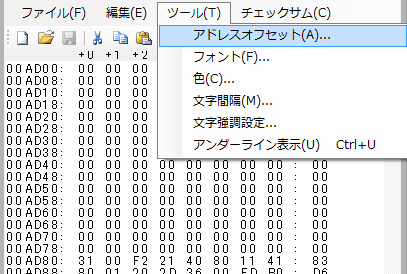
Choose "Tool(T)">"Address Offset(A)...". Enter "AD00", not "AD80".
Then enter 128 x "00" to AD7Fh to show a correct checksum every 32 lines.
Now enter all hexadecimal numbers to EC37h.
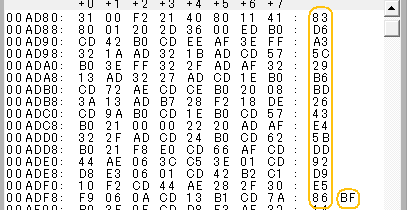
Make sure that each checksum matches the checksum listed in the magazine.
Finally, delete "00" from AD00h to AD7Fh, and add a header as shown below to complete.

The original header is "FE80AD37EC80AD", but do this so that it is loaded with -1000h offset.
When you want to insert numbers, press INS key.
The 2nd file(example):

As "Blood Armor", once the first file(its size is EC37 bytes) is loaded at 9D80h~DC37h, it is transferred to AD80h~EC37h.
In addition, following statement is a must! (Green colored parts)
POKE&HFD9F,&HC9
This information was provided by "parupu". (Thanks!)
But why? See this page.
Tips:
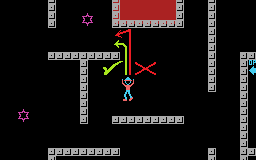 |
If you want to pass a place like the screenshot on the left, only you have to do is holding both the jump button and the directional key, which is no problem in many games today, but not in this game. I have conquered a variety of high difficulty games, but this kind of specification cannot be found anywhere else. Instead of bumping your head and then trying to slide in, you have to release Trigger 1 just before the player and the floor are exactly at the same height. |
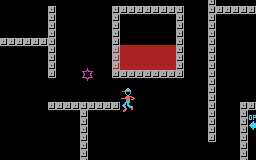 |
First, press and hold Trigger 1. The player will move upward. When the player reaches the position shown in the left screenshot, press and hold the left key, too. Then release only Trigger 1 just before the player and the floor are exactly at the same height. (Still holding down the left key.) |
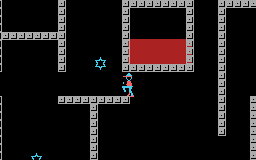 |
See, you made it, didn't you? 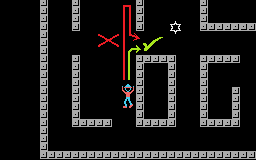 Now how about a place of the screenshot on the right? You can do it in exactly the same way as before. In fact, you can't success it any other way. |
>>Return to the "Type-in MSX programs" page






